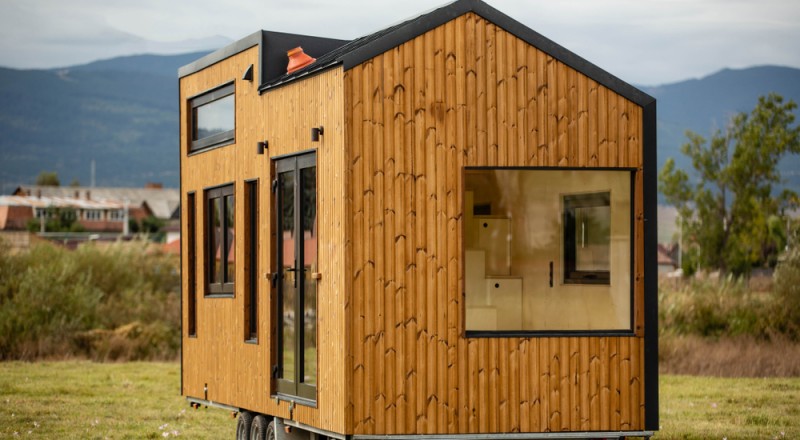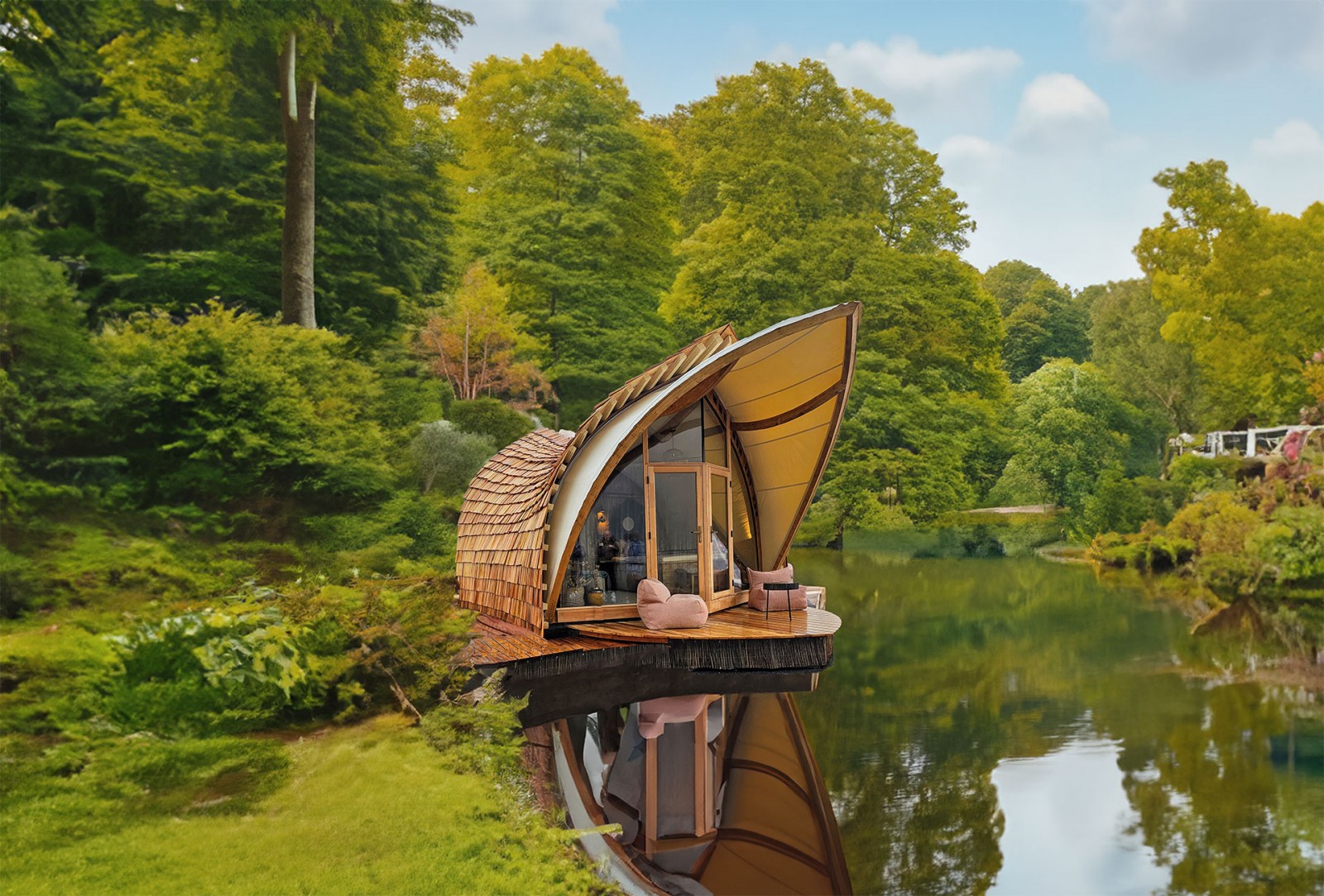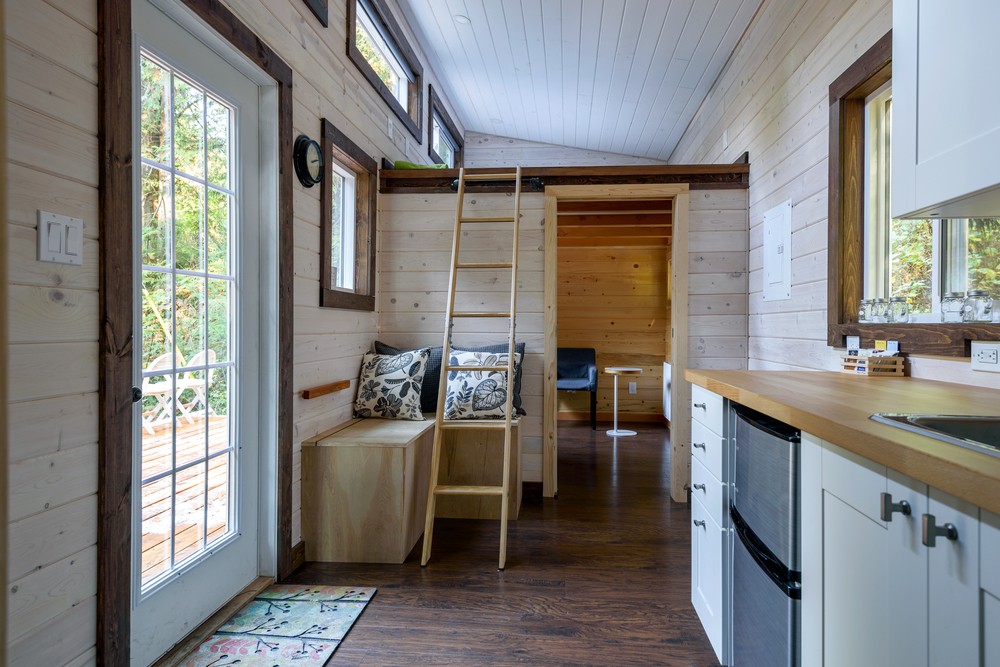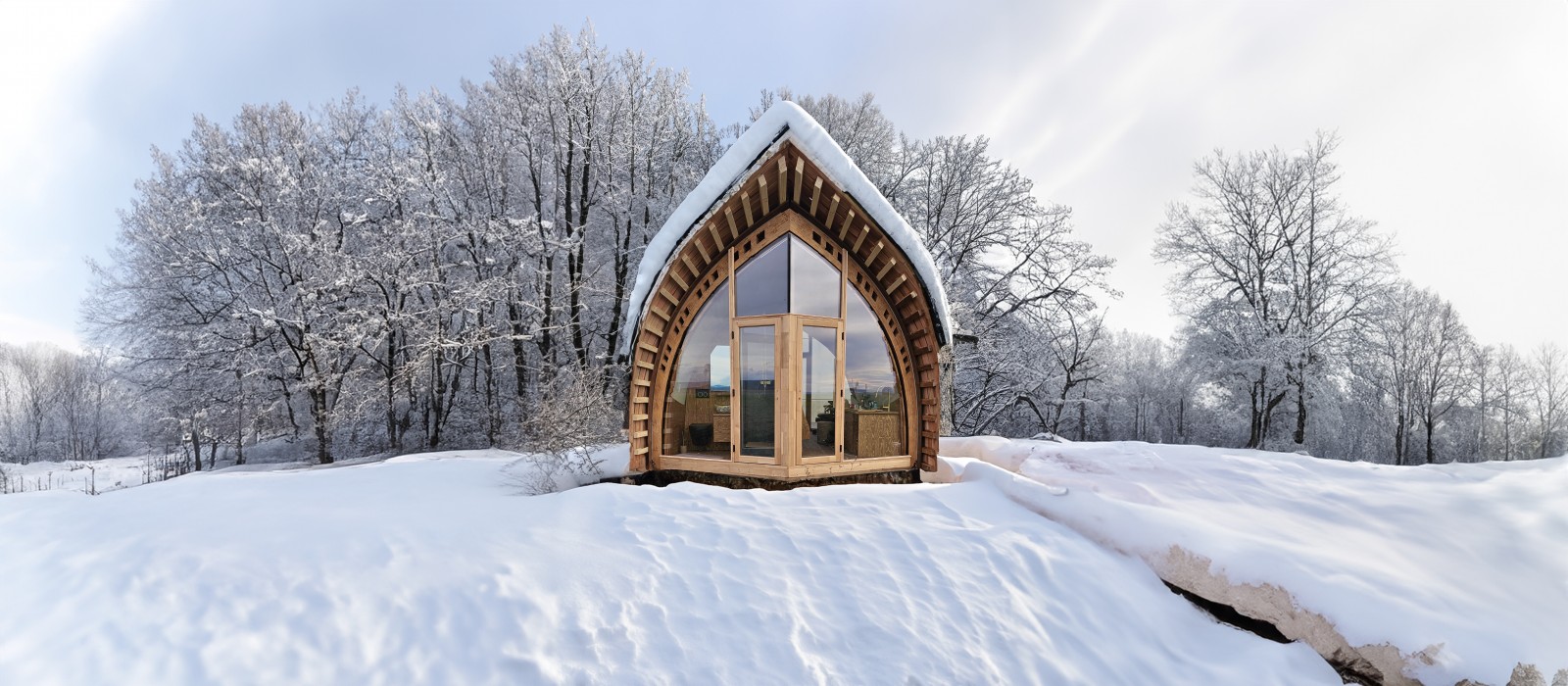1 https://www.von-poll.com/de/immobilienblog/tiny-houses
2 https://www.swb.de/ueber-swb/swb-magazin/wohnen/was-ist-ein-tiny-house
3 https://www.von-poll.com/de/immobilienblog/tiny-houses

A tiny house is a residential building that focuses on compact architecture. It allows for the creation of living space in a very small area, making it suitable as either a permanent home or a unique vacation accommodation.
The popularity of tiny houses is steadily increasing, not only due to the trend for smaller living spaces, but also because of their versatility. Whether for a relaxing vacation at Lake Tahoe or a family getaway to a holiday park in Lyons, Colorado, a tiny house offers maximum functionality in the smallest of spaces.
In this article, we will explore the concept of "Tiny House" from various perspectives, including its history, different types such as the chalet, and its diverse range of uses
The English term "Tiny House" describes a modern form of living that creates an independent home in a compact space. As defined by the 2018 International Residential Code Appendix Q, a tiny house is a dwelling unit with a maximum of 400 sq ft of floor area, excluding lofts.
The focus is on efficiently utilizing fewer square meters of living space, resulting in a compact yet functional living space. Especially in the context of minimalism and sustainable living, the Tiny House is becoming increasingly popular as an alternative form of housing.
These tiny houses are characterized not only by their small living area, but also by clever and often multifunctional room design. Aspects such as storage space or the selection of interior furnishings are of central importance. But where do the origins of this trend lie
The history of the Tiny House Movement is rooted in the United States, where it is dedicated to promoting small, efficient residential buildings. This movement gained momentum in the early 2000s, especially in response to the financial crisis. People began seeking alternative lifestyles that deviated from the American dream of large-scale living.
One of the inspirations for this idea was the book "The Not So Big House – A Blueprint For the Way We Really Live" by Anglo-American architect Sarah Susanka. The concept of environmental awareness and sustainable living is also at the core of the Tiny House Movement.
These small houses were not solely created as a result of the trend of minimalist living. They were also a response to the increasing demand for living space and considerations of the ecological footprint.
Over the following years, the Tiny House Movement spread to Europe and other parts of the world. It resonated with people who consciously chose the path of "less is more" and were open to new housing concepts
There is a wide range of tiny houses with different types, including mobile variants and those with fixed pitches.
Mobile tiny houses, also known as mobile homes, are mounted on wheels or a construction trailer and offer extreme flexibility as they can be easily moved from one place to another. They are ideal for those who prefer to change their place of residence without changing the house itself.
In contrast, permanently installed tiny houses are fixed in one location. They can be placed on a plot of land, in designated tiny house communities, or as part of a larger residential project. Non-mobile tiny houses provide a stable living solution and offer architectural diversity.
Unique types of tiny houses, such as the Mountain Chalet by STROHBOID, demonstrate the versatility of this design even in a small space. They can be used for permanent living or as holiday accommodation.
Source: SWB Wohnen2

Living in a tiny house represents a deliberate departure from traditional single-family homes. Here, the concept of micro-living is embraced in harmony with a sustainable lifestyle. It is not uncommon to integrate photovoltaic systems to emphasize the focus on renewable energies and ensure independence from conventional energy sources.
Aside from the energy supply, there are additional considerations to be mindful of when living in a tiny house.
Selecting the appropriate parking space is of utmost importance for individuals living in tiny houses, particularly if the tiny house is intended for permanent residence. The challenge lies in finding a location that not only meets personal needs but also complies with relevant legal regulations.
Further practical considerations should be made regarding water and power supply. While a photovoltaic system can provide a solution during favorable weather conditions, without adequate storage options, the lights may go out once night falls. Thus, connecting to the electricity grid and public water and wastewater utilities are worth considering.
Especially if the tiny house is not solely used as a weekend retreat, questions related to personal preferences and everyday practicality should also be taken into account when choosing a location. Although the allure of idyllic natural landscapes may be enticing, the convenience of having a nearby supermarket is quickly appreciated when it comes to grocery shopping.
And then there are the legal challenges.
Although life in a tiny house embodies the ideals of minimalism and independence, the reality necessitates certain legal steps and considerations. In comparison to the United States, construction laws for tiny houses in Europe are considerably stricter.
Development plans, state and county building regulations, and building applications are all legal aspects that future residents of tiny houses in the United States, for example, must grapple with. The location is crucial, as in most cases, a building permit must be obtained in advance, whether the tiny house is used as a weekend retreat or a primary residence.
To circumvent this, in some cases, individuals opt for a campsite as their location. However, specific regulations tied to individual states must be adhered to, as outlined in the camping regulations. Therefore, it becomes evident that even when building on a small scale, compliance with legal requirements is unavoidable, making thorough research essential.3

A vacation in a Tiny House offers a unique opportunity to experience a minimalist way of life for a temporary period. And, not to mention, mobile Tiny Houses are increasingly gaining popularity as holiday accommodations.
Such a vacation also provides a broader perspective for travelers seeking new and sustainable experiences. Even though the motto "Bigger is Better" often prevails, Tiny Houses on vacation offer a unique chance to consciously forgo excess and focus on what is essential.
At the same time, camping in a Tiny House does not mean sacrificing the comfort of a traditional hotel vacation. On the contrary, Tiny Houses specifically designed as vacation accommodations can sometimes surprise with unexpected luxury. This is particularly true for non-mobile variants that come with amenities such as an attached sauna, barbecue area, or hot tub
The STROHBOID Mountain Chalet is a unique Tiny House that combines minimalist design and outstanding luxury in just 215 sq ft. This innovative spatial concept sets new standards for sustainable architecture, showcasing Austrian craftsmanship and seamless integration into the natural surroundings.
The distinctive architecture, with its shingle roof and expansive glass front, not only creates a visual connection to the surrounding nature but also fills the space with abundant natural light.
Inside, you will find a cosy double bed, a handcrafted kitchenette, and a modern bathroom, all contributing to a comfortable and luxurious holiday experience amidst the beauty of the natural environment. Curious about the concept of a chalet? Find out more in the article "What exactly is a chalet".

1 https://www.von-poll.com/de/immobilienblog/tiny-houses
2 https://www.swb.de/ueber-swb/swb-magazin/wohnen/was-ist-ein-tiny-house
3 https://www.von-poll.com/de/immobilienblog/tiny-houses

Categories